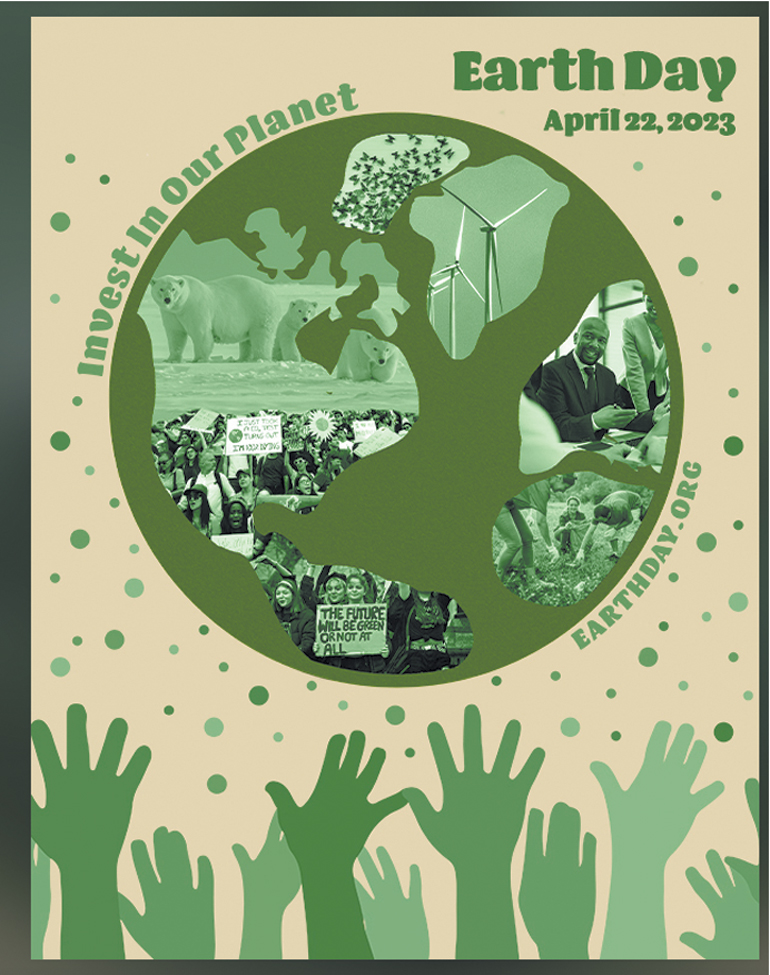A single day that sparked a continuing environmental movement

Since then, the planet has already been in a survival crisis and poses a danger to all human lives. In the 1900’s, environmental issues affected many lives, including oil spills, engine pollution output, smogs, water pollution, and many more.
However, in order to raise environmental awareness and protection, environmental activists joined hands together with the growing public to spread awareness of emerging environmental problems.
Student and citizen groups participated in this initiative by attending local clean-ups and using alternative transportation modes like riding a bike or walking, and attending rallies and protests that were done through speeches, exhibits, and singing.
This environmental movement has spread across different states in America and gained a lot of attention from the local government and the media.
Political leaders have also joined the movement, including then Governor John Love of Colorado, who signed a declaration of supporting a cleaner planet, and then Senator Gaylord Nelson from Wisconsin and then Congressman Pete McCloskey, who organized a national demonstration and incorporating environment and climate literacy in college campuses to gain public awareness of the emerging air and water pollution.
From then on, the environmental movement gained popularity and became Earth Day. Earth Day was first celebrated on April 22, 1970, and became the stepping stone of many environmental movements that came after.
Since then, Earth Day has been celebrated by approximately 190+ countries all over the world; and this year, the observance sets the goal of investing in our planet to create a more sustainable future.
“Earth Day inspired 20 million Americans at the time, 10% of the total population of the United States, to take the streets, parks, and auditoriums to demonstrate against the impact of 150 years of industrial development which has left a growing legacy of serious health impacts,” as said by EARTHDAY.ORG (EDO), an organization that manages the observance of Earth Day around the globe and is also considered “the world’s largest recruiter to the environmental movement.”

According to EDO, the environment is experiencing total crises because of “oil spills, factories and power plants, raw sewage, toxic dumps, pesticides, freeways, the loss of wilderness, and extinction of species.” This compelled political leaders, business and labor leaders, and the wealthy and ordinary city people to support Earth Day in 1970, achieving a rare political alliance.
The initiatives of Earth Day, EDO continued, have resulted in the implementation of environmental laws including the National Environmental Education Act, Occupational Safety and Health Act, Clean Air Act, Clean Water Act, Endangered Species Act, and the Federal, Insecticide, Fungicide, and Rodenticide Act, which prevented hundreds of species from becoming extinct and have protected millions of human lives from illness and death.
By 1990, groups of environmental leaders organized another significant environmental campaign promoting the movement across different countries which expanded the participants of Earth Day. Afterward, the movement was then changed to Earth Day which gained attention from the media, and environmental protests and rallies have taken on in different communities. By then, Earth Day becomes a global event with 200 million participants across 141 nations, bringing environmental awareness to a worldwide audience.
Moreover, there was a global conference called “The United Nations Earth Summit” which was held in Rio de Janeiro in 1992. The global conference highlighted how achieving sustainable development is the top priority of the global community, increased recycling efforts worldwide, and emphasized how “integrating and balancing economic, social and environmental concerns in meeting our needs is vital for sustaining human life on the planet and that such an integrated approach is possible.”
In the following years, environmental initiatives continue to grow with the goal of focusing on global warming and promoting the use of sustainable energy. Earth Day became a hot topic in local and global conversations, utilizing the power of media and technology to unite environmental activists worldwide.
As EDO explained, when major crises piled up from the “cynicism of climate change deniers, well-funded oil lobbyists, recent politicians, disinterest public, and the divided environmental community,” celebrating Earth Day has become a significant occasion for international environmental action.
Involving millions of people in this environmental movement throughout the years, Earth Day has opened doors for civic opportunities and volunteers across all nations. Thanks to this movement, every year, more people have been participating to do their share in achieving environmental conservation for the planet.
This year, EDO celebrates Earth Day with the theme “Invest in Our Planet,” which makes this year’s observance focus more on building a healthier economy.
Earth Day 2023 seeks to mobilize billions of participants, including organizations, businesses, institutions, and governments to acknowledge the shared responsibility of everyone in achieving a sustainable and green economy.
Earth Day will focus on reorienting environmental awareness, stepping up the pace of action, reuniting everyone around the world, and letting them realize that with everyone’s cooperation, a prosperous and sustainable future is possible.
“The Earth Day 2023 theme is focused on engaging the more than one billion people, governments, institutions, and businesses who participate in Earth Day to recognize our collective responsibility and to help accelerate the transition to an equitable, prosperous green economy for all. We are focused on reframing the conversation, accelerating action, and bringing everyone together to understand that this is within our reach if we work together,” EDO explained.
Celebrating Earth Day can be done physically and virtually. Virtually, EDO will host an online series that takes place from April 14 to 22 in different time zones. This online series for Earth Day tackles topics such as climate literacies and sustainable efforts and initiatives in addressing the climate crises.
Physically, participants can participate in different projects such as tree planting, joining clean-ups, promoting the importance of climate literacy, and supporting sustainable products and services.
In the Philippines, according to the Department of Environment and Natural Resources (DENR), April 22 of every year has been declared as the Philippines’ Earth Day under Presidential Proclamation 1481, signed on April 10, 2008 by then President Gloria Macapagal-Arroyo “to raise the level of awareness on environmental degradation and destruction in the country that threatens the very quality of life of many Filipinos.” Presidential Proclamation 1482 was also signed on the same date, declaring the whole month of April each year as the Month of the Planet Earth.
The DENR also said that celebrating Earth Day and protecting the planet can be done by simply “saving water and energy, cutting down waste, planting trees, using public transportation, consuming locally sourced foods, and following sustainable practices that will help invest on the planet.”
“It further reminds all sectors that all must take action against the climate crisis and invest in a green economy that will leave the world in a better state for future generations,” the DENR added.
As the effects of climate change are becoming more obvious each day, the fight for a clean and sustainable environment continues with increasing urgency. More than a billion people worldwide come together and celebrate Earth Day as a “day of action to change human behavior,” EDO said.
EDO added that the social and cultural environments back then are resurfacing now and the younger generation is taking action and demanding changes for a better future. Thanks to digitalization, the call for action of environmental awareness is reaching globally, which is also bringing generations closer together to tackle the climate issue before it’s too late.
“Earth Day is all about empowering individuals with the information, the tools, the messaging, and the communities needed to make an impact and drive change,” EDO said. — Angela Kiara S. Brillantes



